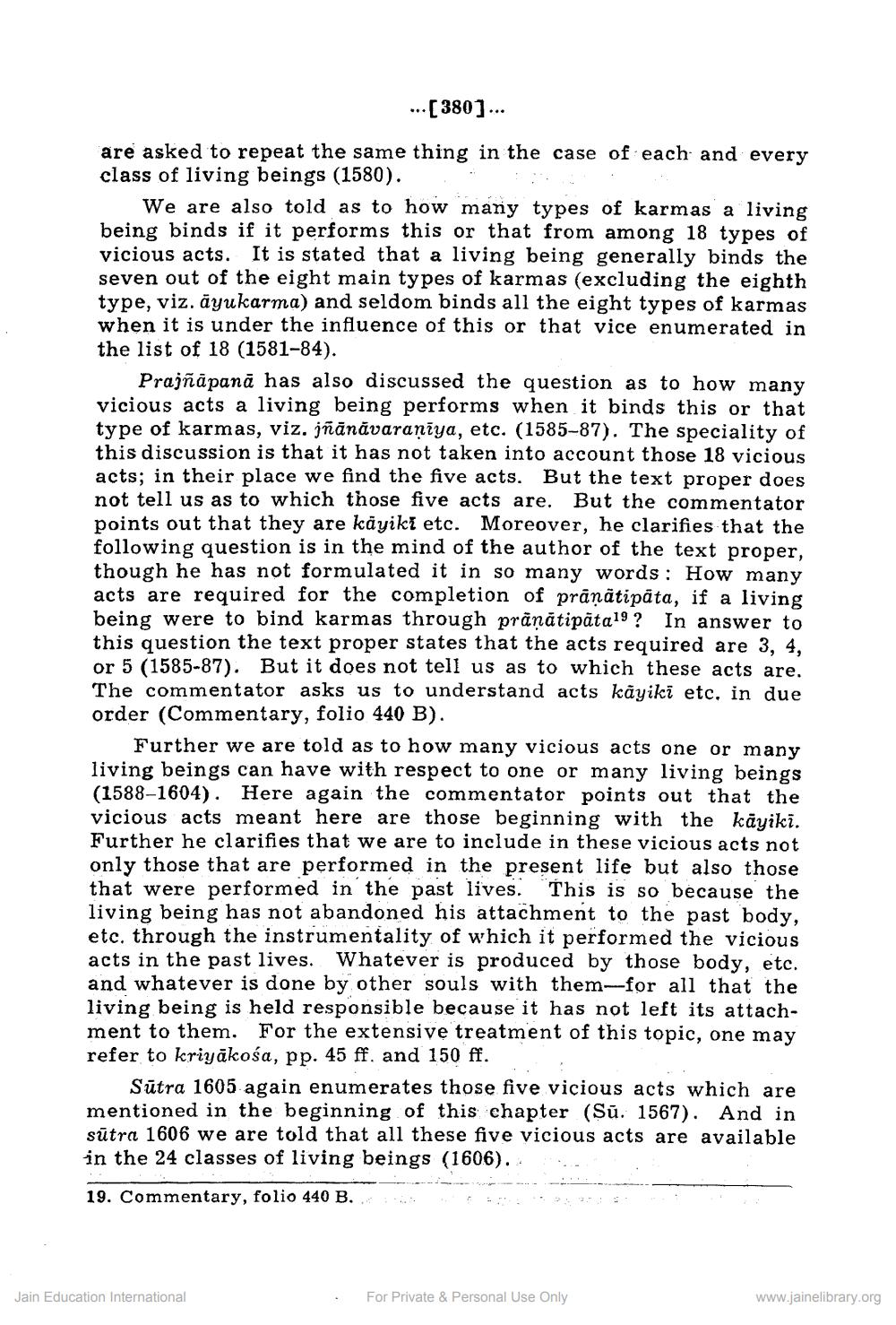________________
...[380] ...
are asked to repeat the same thing in the case of each and every class of living beings (1580).
We are also told as to how many types of karmas a living being binds if it performs this or that from among 18 types of vicious acts. It is stated that a living being generally binds the seven out of the eight main types of karmas (excluding the eighth type, viz. ayukarma) and seldom binds all the eight types of karmas when it is under the influence of this or that vice enumerated in the list of 18 (1581-84).
Prajñāpanā has also discussed the question as to how many vicious acts a living being performs when it binds this or that type of karmas, viz. jñānāvaraṇīya, etc. (1585-87). The speciality of this discussion is that it has not taken into account those 18 vicious acts; in their place we find the five acts. But the text proper does not tell us as to which those five acts are. But the commentator points out that they are käyiki etc. Moreover, he clarifies that the following question is in the mind of the author of the text proper, though he has not formulated it in so many words: How many acts are required for the completion of praṇätipāta, if a living being were to bind karmas through praṇatipata19? In answer to this question the text proper states that the acts required are 3, 4, or 5 (1585-87). But it does not tell us as to which these acts are. The commentator asks us to understand acts käyiki etc, in due order (Commentary, folio 440 B).
Further we are told as to how many vicious acts one or many living beings can have with respect to one or many living beings (1588-1604). Here again the commentator points out that the vicious acts meant here are those beginning with the käyiki. Further he clarifies that we are to include in these vicious acts not only those that are performed in the present life but also those that were performed in the past lives. This is so because the living being has not abandoned his attachment to the past body, etc. through the instrumentality of which it performed the vicious acts in the past lives. Whatever is produced by those body, etc. and whatever is done by other souls with them-for all that the living being is held responsible because it has not left its attachment to them. For the extensive treatment of this topic, one may refer to kriyakośa, pp. 45 ff. and 150 ff.
Sutra 1605 again enumerates those five vicious acts which are mentioned in the beginning of this chapter (Su. 1567). And in sūtra 1606 we are told that all these five vicious acts are available in the 24 classes of living beings (1606)...
19. Commentary, folio 440 B.
Jain Education International
For Private & Personal Use Only
www.jainelibrary.org




